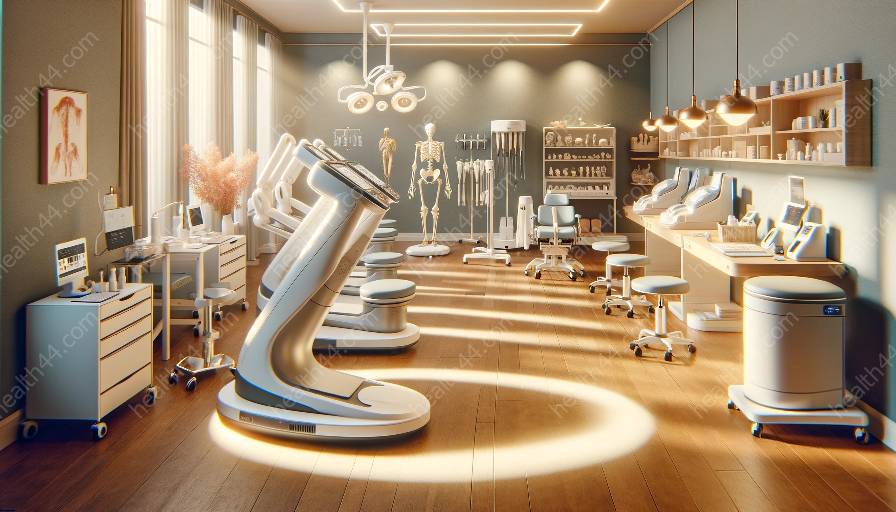Orthopedic imaging techniques and devices play a crucial role in the diagnosis, treatment, and monitoring of musculoskeletal conditions and injuries. Advances in medical devices and equipment have revolutionized orthopedic imaging, enabling more accurate and efficient diagnosis and treatment.
Benefits of Advanced Orthopedic Imaging Techniques
With the development of cutting-edge orthopedic equipment and medical devices, healthcare professionals can now obtain detailed images of the musculoskeletal system, allowing for precise diagnosis and treatment planning.
Conventional and Advanced Imaging Modalities
Traditional orthopedic imaging techniques, such as X-rays and CT scans, have been enhanced by the introduction of advanced modalities, including MRI, ultrasound, and fluoroscopy. Each imaging modality offers unique advantages, such as high-resolution images, real-time visualization, and non-invasive imaging.
Orthopedic Imaging Devices and Their Applications
Orthopedic imaging devices encompass a wide range of equipment, from conventional radiography machines to specialized MRI and ultrasound systems. These devices are designed to meet the specific needs of orthopedic practitioners, enabling them to accurately assess bone and soft tissue injuries, monitor disease progression, and evaluate treatment outcomes.
Integration of Technology in Orthopedic Equipment
Technological advancements have led to the integration of digital imaging capabilities and computer-aided diagnosis (CAD) in orthopedic equipment. This integration enhances image analysis and interpretation, allowing for efficient communication and collaboration among healthcare professionals for improved patient care.
Role of Medical Devices in Orthopedic Interventions
Medical devices and equipment are integral to minimally invasive orthopedic procedures, such as arthroscopy and spinal interventions. Innovations in orthopedic equipment have resulted in the development of specialized tools and instruments that facilitate precise surgical navigation and implant placement.
Emerging Trends in Orthopedic Imaging and Equipment
The field of orthopedic imaging and equipment continues to evolve, with ongoing research and development focused on improving imaging resolution, reducing radiation exposure, and enhancing the usability of orthopedic devices. Furthermore, the integration of artificial intelligence (AI) and machine learning is set to further revolutionize orthopedic imaging interpretation and clinical decision-making.
Adoption of Point-of-Care Imaging Devices
Point-of-care ultrasound and portable X-ray systems are gaining prominence in orthopedic settings, enabling rapid and on-site imaging for trauma assessment and postoperative monitoring. These compact devices offer increased accessibility and convenience, particularly in emergency and sports medicine settings.
Conclusion
Orthopedic imaging techniques and devices, alongside medical devices and equipment, are essential components of modern musculoskeletal healthcare. Their continuous development and integration into clinical practice contribute to improved patient outcomes, enhanced diagnostic accuracy, and optimized treatment strategies in the field of orthopedics.


